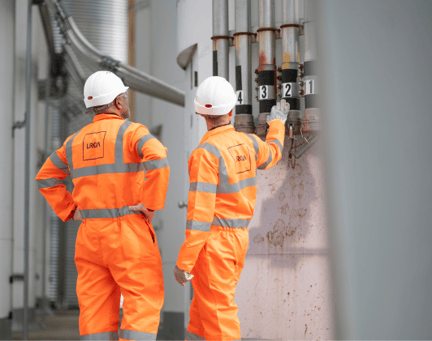In this first instalment of a three-part series covering the complexities and opportunities of hydrogen and its role in a net-zero future, Leanne Halliday, LRQA’s global expert on hydrogen, explores where it sits in the wider energy mix.
In this first instalment of a three-part series covering the complexities and opportunities of hydrogen and its role in a net-zero future, Leanne Halliday, LRQA’s global expert on hydrogen, explores where it sits in the wider energy mix in the context of other energy sources, as well as some of the advancements aiming to support the scaling up of hydrogen production.
One part of a broader solution
The hydrogen sector is targeting significant expansion, with projections indicating the completion of 1,780 hydrogen projects by 20401. This represents a substantial 40% YoY growth in the number of projected projects over the last 24 months, signalling extensive demand in the industry. Despite this promising outlook, the sector faces a range of challenges; only 4% of projects greater than 10 megawatts have reached the Final Investment Decision (FID) stage1.
The hydrogen sector is targeting significant expansion, with projections indicating the completion of 1,780 hydrogen projects by 2040.
A contributing factor is the slower-than-expected response from the supply chain to provide innovation to reduce the cost of scale-up, and hence ability to attract finance, which has resulted in fewer projects advancing to the construction phase. There is a clear and pressing need for education, innovation, and stability to realise the full potential of the hydrogen market and its role in achieving ambitious net-zero targets. As of today, current global output from hydrogen is lagging behind climate ambitions and targets. However, despite this, hydrogen is still poised to play a significant role in achieving a net-zero future, but it is just one piece of a larger puzzle. The world has set ambitious targets to curb emissions and combat climate change and while hydrogen offers an avenue to help meet these goals, it is essential to recognise it as part of a more extensive solution. The established technology around hydrogen, including its production, storage, and transportation, means it’s not just a promising idea but a solution ready for implementation.
Comparative advantages
The global transition to cleaner energy requires us to evaluate the potential of hydrogen in the context of available alternatives. The primary challenge lies in achieving net-zero objectives while maintaining the efficiency and economic feasibility of the solutions. The current reality is that addressing climate change might require consumers to accept higher energy costs. Nevertheless, hydrogen boasts several distinct advantages over its counterparts. Unlike wind or solar energy, which demand vast land areas and specific environmental conditions, hydrogen operations can be more localised and smaller scale. It has the potential to significantly reduce carbon footprints in industries with high energy consumption, like steel production. Additionally, unlike some renewable sources, hydrogen can be produced in one location and consumed in another, thanks to its transportability using carriers such as ammonia or methanol.
Advancements in hydrogen production
While hydrogen might not singularly power a net-zero future, it will undeniably be a key player. Its technological readiness, adaptability across industries, and transportability make it a leading contender in the renewable energy landscape. However, a comprehensive approach that leverages all available renewable sources will be crucial for a truly sustainable future.
Hydrogen's technological readiness, adaptability across industries, and transportability make it a leading contender in the renewable energy landscape.
The production technology for hydrogen has been around for many years, with techniques like electrolysis, SMR, and coal gasification being long-established. However, as the world eyes hydrogen as a potential primary energy source, there’s a renewed emphasis on scaling up production while also making it cost-effective. For perspective, while the current global electrolysis manufacturing capacity stands at 14 gigawatts per year, future targets require a substantial jump to 70 gigawatts annually. As a result, innovations are focused on enhancing production efficiency. Additionally, innovative storage solutions are emerging, with solid storage solutions becoming more prevalent. An exciting development is the extraction of naturally occurring “gold” hydrogen from under the Earth’s surface, although widespread commercial-scale operations may still be a decade or more away.
LRQA: Your partner for hydrogen projects
Every hydrogen project carries its unique risks and challenges, making it essential to identify the necessary technical expertise early in the process. That’s why LRQA’s team of experts collaborates closely with you to understand the full scope of your plans. Based on your requirements we can build a tailored hydrogen assurance programme that ensures your equipment, products, activities, and supply chain operate in line with legal requirements, global standards, and industry best practices.
1LRQA Consulting Analysis, IEA, Hydrogen Council)








